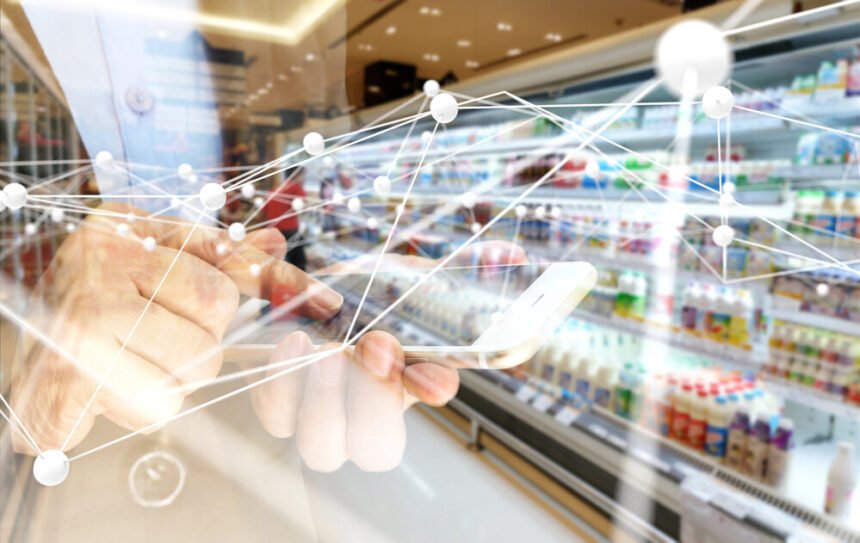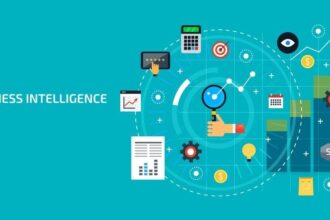Succeeding in retail isn’t easy. Shifting customer tastes, shrinkage risks and reduced traffic at physical stores are just some of the challenges retailers may face as they try to operate profitably. Many are relying on data science and business intelligence (BI) tools to get ahead of competitors and stay resilient in a challenging marketplace.
Here are five trends in business intelligence and data science for retail worth knowing:
1. Artificial Intelligence-Powered Video Analytics
Artificial intelligence (AI) can spot patterns and trends humans may miss without high-tech help. Most retail locations already have security cameras installed to safeguard against shoplifting, and some combine those with AI. Doing that gives the stores new insights that drive improved performance. For example, some cameras used in grocery stores have object-recognition capabilities that tell sales floor team members about stock shortages.
AI can also determine some broad characteristics, such as customer gender and approximate ages. Such a system might reveal that females under 40 are more likely to select items from a shelf containing organic snacks, but men in the same age group usually ignore those products.
Many retailers use AI video analytics because they find it suits a variety of use cases. It could help with checkout management by assessing when the number of people waiting in a queue gets too high. If a retailer installs an interactive display with an AI-equipped camera, the collected data could show how many shoppers stop to look at the promotion or how long they linger.
Moreover, AI could act as a problem solver. If it detects people’s average height, the retailer may adjust a display for better accessibility. The technology could also show which areas of a store have the most shoppers, triggering managers to send more employees to those departments.
2. Using Data to Offer Personal Styling Suggestions to Shoppers
Virtually everyone has firsthand experience with spending a day shopping for clothes and finishing it empty-handed. Many people have well-formed ideas about the kinds of attire they want. The main problem is that they don’t know which retailers will have it, so they spend hours engaged in a useless search.
That’s likely why services like Stitch Fix — which sends clothes to people’s doorsteps based on their style preferences — have become so popular. There are currently more than 100 data scientists on the company’s team who provide information to support stylists and the business overall. Algorithms understand things like a person’s size and budget, while the style experts use their judgment to select wardrobe pieces.
Stitch Fix’s inventory consists of more than 1,000 brands, including the company’s private labels. It’s one of the leading enterprises using data to find customers the styles they love, but it’s not the only option.
Mada is a newer company on the market taking a similar approach, although it seems a little less robust. Users start by filling out a style quiz. After submitting it, they get tailored recommendations through a swipe-friendly interface. Mada currently has more than 2,600 brand partners.
It’s easy to envision how other retailers offering apparel could do this, too. For example, people might get emailed suggestions for new products to buy based on their past purchases. When retail brands successfully present options to consumers that they genuinely want, the sales potential goes up.
3. Relying on Location-Based Business Intelligence Before Opening Physical Stores or Renewing Leases
With some physical stores receiving less traffic than they once did, it’s especially important for commercial investors to carefully weigh the pros and cons of a potential new location. Many of them are increasingly dependent on data analytics to make investment and leasing decisions.
Statistics about population, traffic or tourism could give an investor useful business intelligence to guide a decision about whether to open a new store in a location that made it onto a shortlist. Then, digging into data about the number of visitors could help a brand determine whether or not to renew a lease.
This kind of information can also provide glimpses into customers’ needs. For example, if a high percentage of people leave a shopping center and immediately head across the street to a dollar store, that trend could show investors how discount chains remain relevant.
Perhaps business intelligence analytics indicate average sales in a mall food court are down. However, lots of shoppers ultimately go to an adjacent Italian restaurant outside the mall. That could mean people are not satisfied with the mall’s food options. When looking for trends like that, investors must be careful not to put too much emphasis on one cause-and-effect link.
Could something else — like a lack of seating — discourage people from the food court? If so, the fix might be as straightforward as adding more tables and chairs. In any case, location-based intelligence could help retail property investors avoid costly mistakes.
4. Data Wrapping
Another of the trends in business intelligence and data science for retail involves something called data wrapping. It’s a method of bundling information with a brand’s products or services. Data wrapping commonly happens when financial brands offer budgeting apps or show breakdowns of how someone’s credit score changed from month to month.
More retail brands will likely start using it, too, though. For example, a book retailer might offer an app that lets people record each title read by scanning a store-specific code. The application would then break down the totals and show the person how many pages they read per year or the average amount of time spent reading.
Data wrapping can improve customer satisfaction, plus increase purchase potential. The bookstore could give someone a $10 coupon once they read 10,000 pages, for example. Retailers also win out because they get statistics about the authors, titles or genres its customers like the most.
5. Dynamic Pricing
When Quantzig published its top four retail analytics trends of 2020, dynamic pricing was on the list. It allows retailers to change prices in the moment based on data about customer demands. Amazon led the way with dynamic pricing, implementing the practice several years ago. It now varies them more than 2 million times per day based on customer intent and desire.
Other retailers like Target and Walmart do it, too. If the goal is to compete with Amazon, though, many will likely lose the battle. The better approach is to use dynamic pricing to achieve a specific aim, such as to boost in-store traffic or increase the likelihood of a certain consumer group purchasing items.
Dynamic pricing must occur with care, however. Brands that try it haphazardly or offer different prices for online purchases versus those made in person risk losing their loyal customers.
Smarter Decision-Making Made Possible
These five trends in business intelligence and data science for retail highlight how pertinent information can steer the choices brands make. With their help, retailers are more likely to prosper and keep customers coming back.








